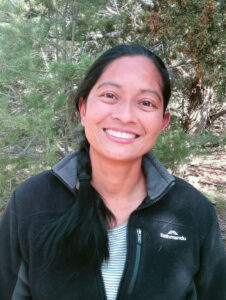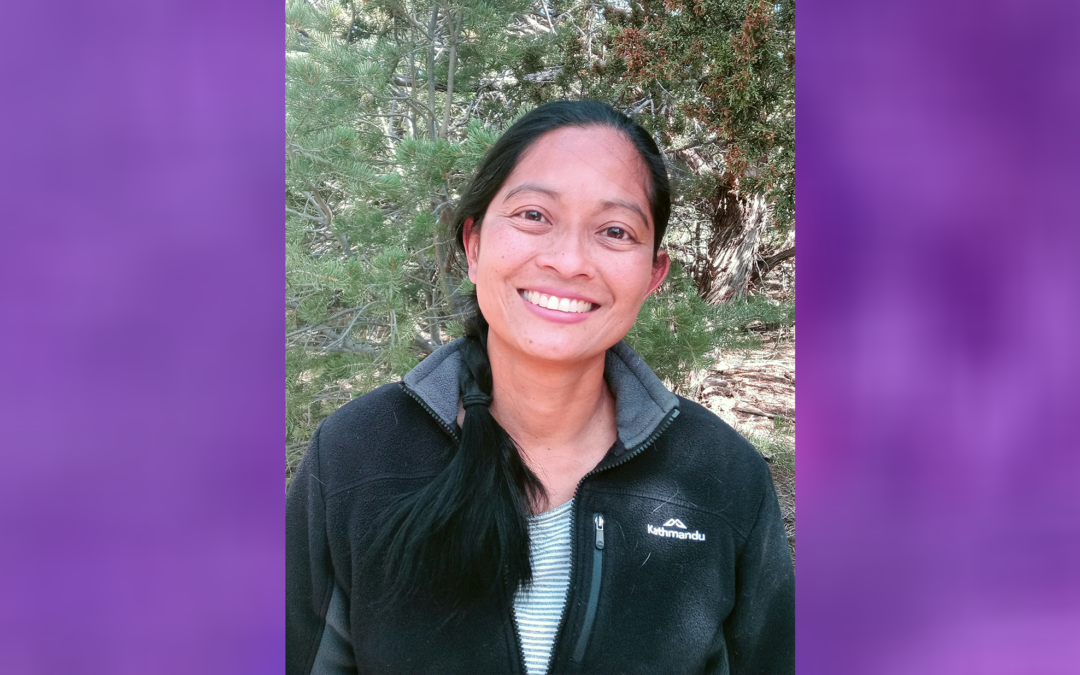 Although Las Vegas is a long way from where Shantini Ramakrishnan was born and raised in Malaysia, she has come to think of it as home.
Although Las Vegas is a long way from where Shantini Ramakrishnan was born and raised in Malaysia, she has come to think of it as home.
“I came for a summer position, a seasonal position in the field working with rodents and plague in waters at what at the time was called Wind River Ranch. It’s now Rio Mora National Wildlife Refuge,” she says. “I came for what was supposed to be for the summer season and had never been to New Mexico, never knew northern New Mexico existed and I fell in love with it. And I said, ‘Alright, well, what can I apply for? How can I stay?’”
She was able to find a way to stick around, while also going back to school at Highlands University. And that was quite a change from getting her undergraduate degree from a much larger school.
“I was a non-traditional student,” Ramakrishnan says. “I had a fulltime job, and I was taking classes. So I wouldn’t say that I was fully integrated into the student community because I was always coming in and leaving. But the classes were really small, which is nice. I mean, faculty really gets to know you as a person. They’re interested in your work. Rio Mora also feels like that a lot. So I also knew faculty who were doing research out there and other students who were doing research. So I was able to combine professional and academic and networking and connections, which with a community this small, is really important.”
So Ramakrishnan eventually earned a master’s degree at New Mexico Highlands University in natural sciences with a concentration in biology and now works at the New Mexico Forest and Watershed Restoration Institute, which is separate from the school, but still a big part of its community.
“I guess a lot of this kind of relates to how Highlands interacts with the local community and surrounding areas,” she says. “Because we’re invested in Las Vegas, we’re not separate from the communities.”
And what’s going on now is the drive to thrive following the devastating Calf Canyon/Hermit’s Peak Fire.
“There was a lot of need and a lot of questions and a lot of uncertainty,” Ramakrishnan says. “We responded after the fire with parts of the issues that we knew how to do. There was a lot of concern about erosion. There was a lot of concern about all these miles and miles and miles of dozer lines, what do you do with them? What do you do with your burned trees? We ran a series of workshops related to all of those things.”
She has gone out into impacted areas, reaching out individually to people to listen to their concerns, offer advice if it’s sought or simply to be a sympathetic sounding board.
And being connected, if only peripherally, to Highlands, has helped in that process.
“We’re based at Highlands and that kind of, in many ways, opens up doors,” Ramakrishnan says. “When I’m knocking on people’s doors to say, ‘Hey, we’re looking for a field site to do a training session or to do a workshop, would you be interested?’ Saying that I’m based at Highlands means the door is more open.”

